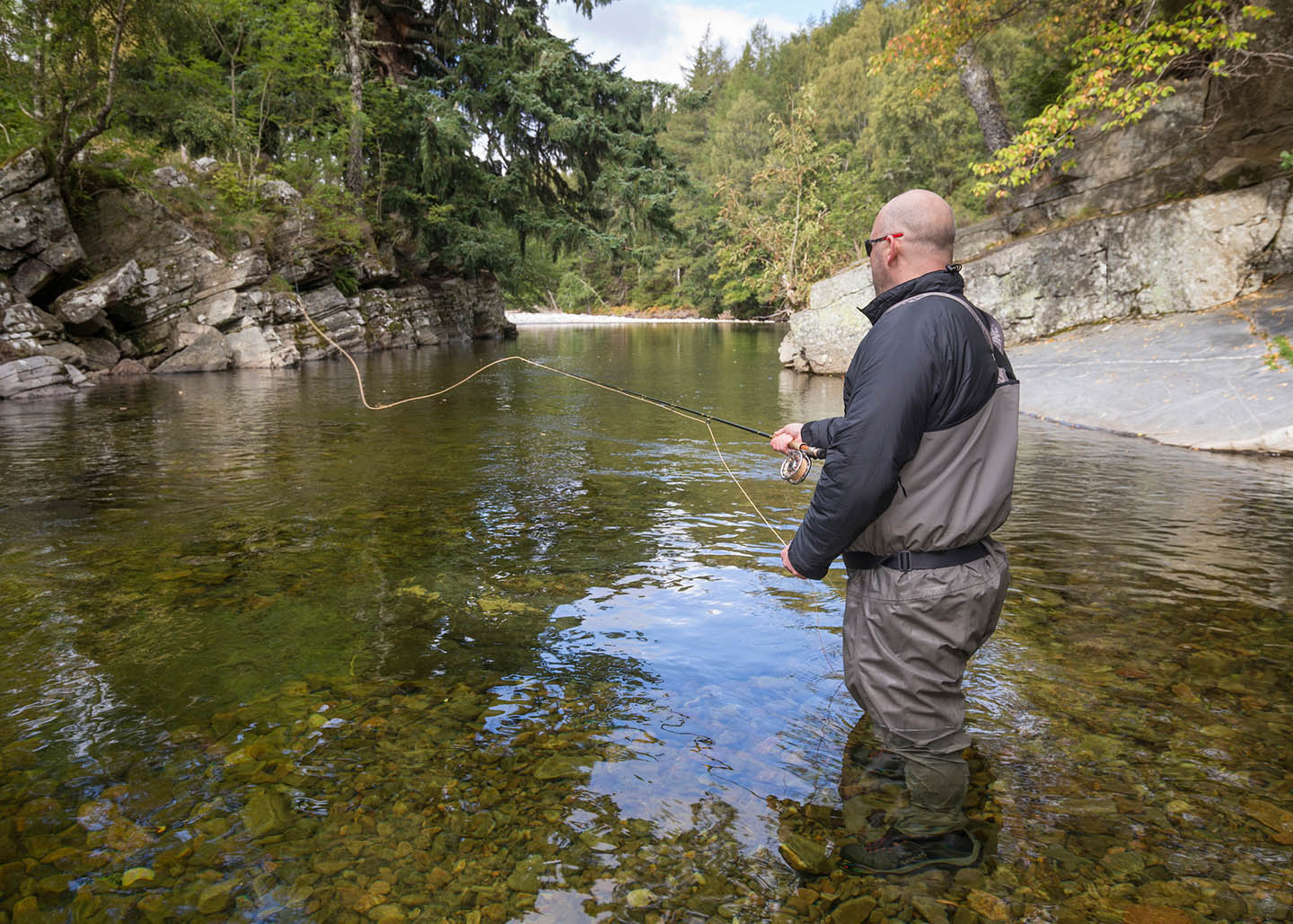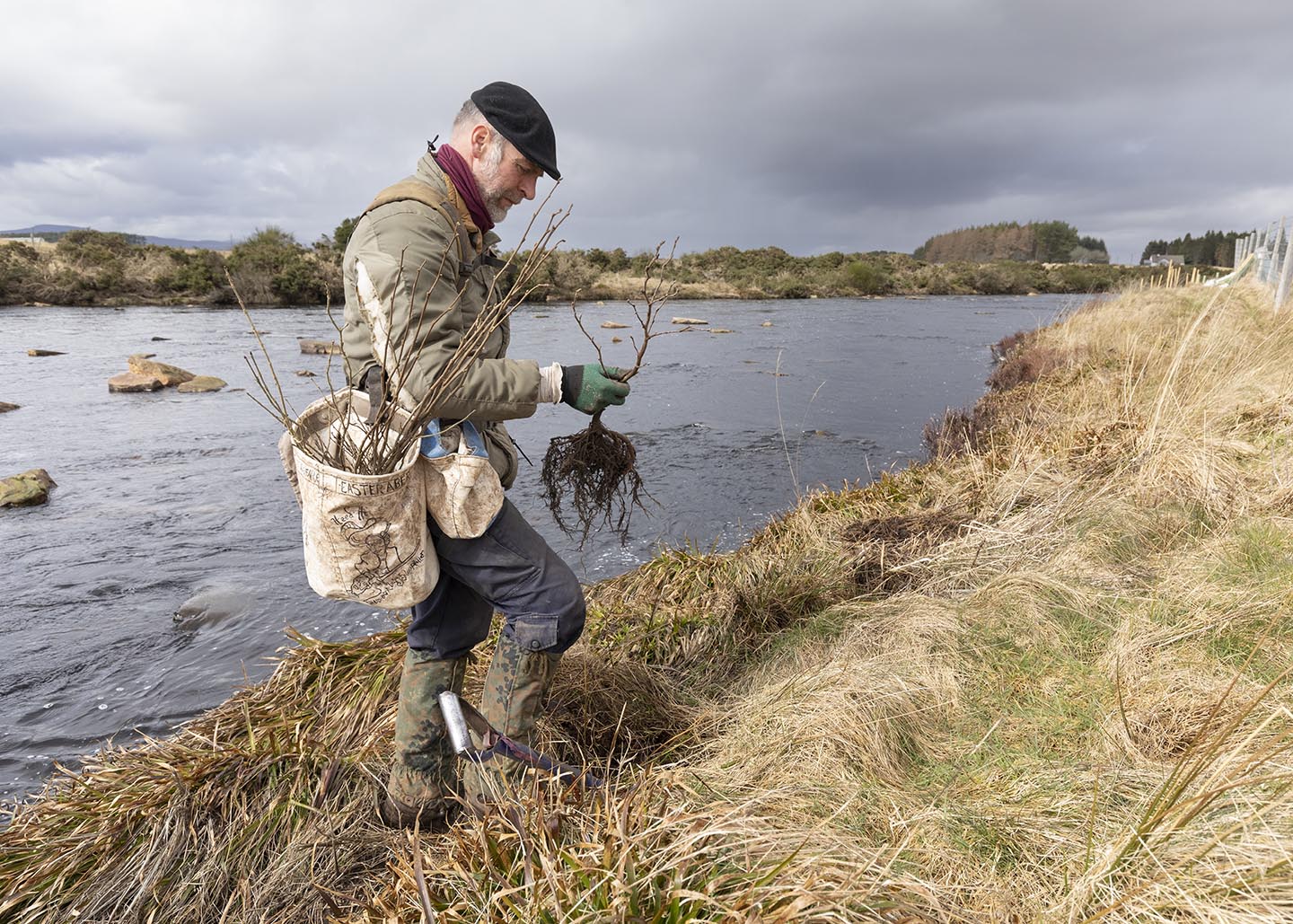If we’re to ensure Scotland still has
salmon in the future, we have to ensure
that whole river catchments are healthy.
Much of the native Caledonian Forest of Scots pine, willow,
downy birch, rowan, and many other species, has been lost. Without vegetation stabilising the soil and intercepting the flow
of water, floods and droughts are more likely, reducing the rivers’
ability to support the huge salmon runs that once flourished. Without the cooling shade that trees provide on riverbanks,
temperatures in rivers in the Highlands are reaching critical
levels for Atlantic salmon, trout and freshwater pearl mussels. Key to saving these iconic species is restoring the
function of the ecosystems they form an essential part of.
By taking a catchment-scale approach to
river health, we can restore their natural
ecology, boost biodiversity, sequester
carbon, and benefit communities.
Woodland shades rivers in hot summers. This helps salmon grow
and develop. Roots and deadfall provide refuge for young salmon,
while organic matter adds nutrients to the system, supporting more
invertebrates that sustain a balanced ecosystem. Carbon is drawn in from the atmosphere as the trees grow and soil
condition improves. The ecosystem becomes more complex and
biodiverse, while trees slow the flow of rain from headwaters, reducing
the impact of floods and droughts. The improvement in salmon and trout numbers supports a sustainable
economy, enjoyed by local people and visitors from across the world.








